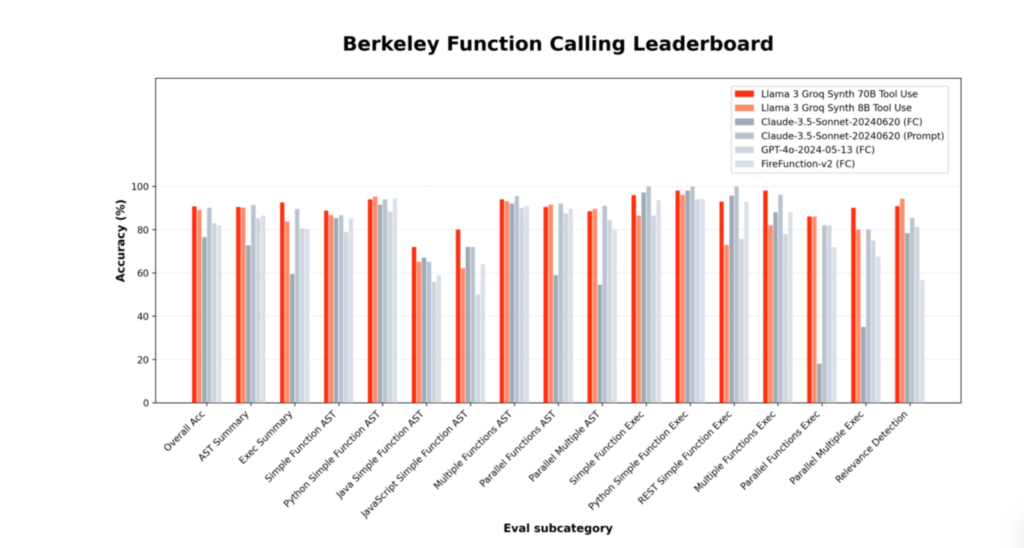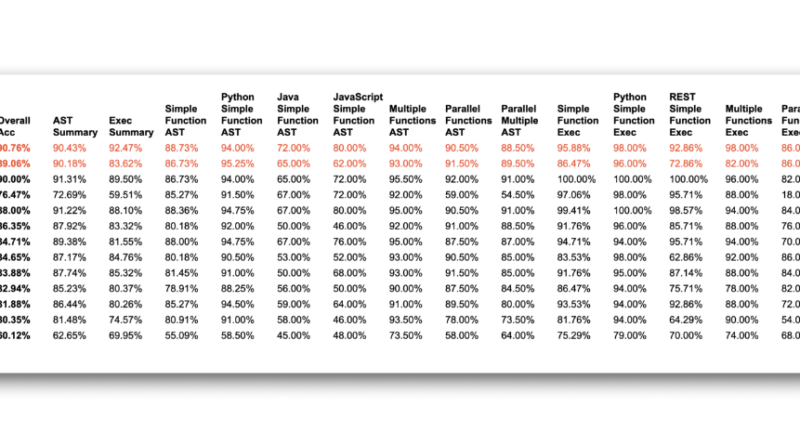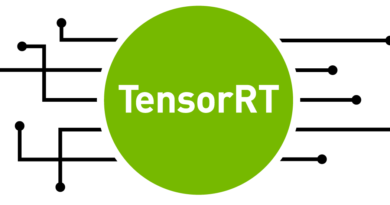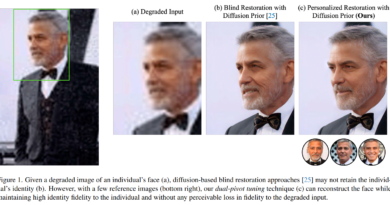Groq Unveils Llama-3-Groq-70B-Tool-Use and Llama-3-Groq-8B-Tool-Use: Open-Source Models Dominating Berkeley Function Calling Leaderboard Achieving Over 90% Accuracy
Significant advances have been made in Artificial Intelligence (AI) and machine learning (ML), which has resulted in the development of more sophisticated models and algorithms. Groq, a leading AI company, They have made two open-source models for tool use, Llama-3-Groq-70B-Tool-Use and Llama-3-Groq-8B-Tool-Use. Both of these models achieved state-of-the-art accuracy levels of over 90% in the Berkeley Function Calling Leaderboard (BFCL) as reported.
Introducing Llama-3-Groq-70B-Tool-Use and Llama-3-Groq-8B-Tool-Use


In collaboration with Glaive, Groq has developed these models that enhance AI systems in tools using and function calling capabilities. This is the highest-performing model-The Llama-3-Groq-70B-Tool-Use on BFCL-its accuracy rate is impressively high at 90.76%. The third highest-ranking tool-use model (89.06% accuracy) happens to belong to Llama-3-Groq-8B-Tool-Use model.
Training Approach and Ethical Standards
The development was characterized by detailed training that combined Direct Preference Optimization (DPO) and full fine-tuning. In place of using user data, ethically sourced data was used which made sure that the high-performance and ethical AI development is guaranteed. The low contamination rates were displayed by a thorough contamination analysis which meant that there was minimal overfitting.
Specialized Tool Use Capabilities
These are models that have been created in order to be used as tools and are great for doing certain things, such as interacting with APIs; manipulating structured data; or invoking functions. If you work on some kind of artificial intelligence where exact use of certain tools is important, then these are the ones that you’ll need because they give very accurate results.
Hybrid Approach with General-Purpose Language Models
For optimal performance, a combination of both specialized models that are used in different fields, together with general-purpose language models is designed. In this case, Llama-3 Groq Tool Use models play the role of handling function calling, API interactions, as well as structured data manipulation. On the other hand, in case of general knowledge or non-restricted dialogs, it is better to resort to universal language models such as Llama-3 70B without any modifications. Hence, this guarantees that every question is addressed using the most fitting model hence boosting the effectiveness of the AI system overall.
Availability and Future Innovations
The models are available for preview access through the Groq API. Using model IDs llama3-groq-70b-8192-tool-use-preview and llama3-groq-8b-8192-tool-use-preview, the community can start building and experimenting with these models through the GroqCloud Developer Hub, fostering innovation in AI tool use.
Conclusion
Groq’s release of the Llama-3-Groq-70B-Tool-Use and Llama-3-Groq-8B-Tool-Use models marks a significant step forward in AI tool use and function calling. These open-source models, with their impressive performance and permissive licensing, have the potential to drive substantial advancements in AI research and development. Groq’s commitment to ethical AI development further solidifies their leadership in the field.
Got an incredible AI tool or app? Let’s make it shine! Contact us now to get featured and reach a wider audience.
Explore 3600+ latest AI tools at AI Toolhouse 🚀. Don’t forget to follow us on LinkedIn. Do join our active AI community on Discord.
Read our other blogs on AI Tools 😁
If you like our work, you will love our Newsletter 📰




